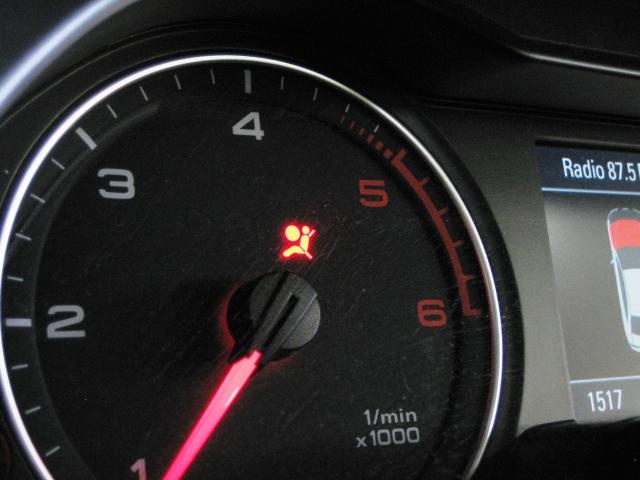SRS (Supplemental Restraint System) Warning Light
We mention the supplement restraint system (SRS) warning light; perhaps, you don’t have any clues as what it is. However, you would immediately have the corresponding idea if we say it is commonly called the airbag system light. It is a system controlled by computer to deploy various airbags. The computer is also responsible for controlling the seatbelts in an accident to protect passengers from physical harm created by the impact of the collision.
The SRS system is also referred to as a passive restraint system because the vehicle occupants do not need to do anything in order to activate the SRS system when the enabling criteria—speed and deceleration—are met. In contrast, seat belts are an active restraint system. The vehicle occupants must proactively latch each seat belt in order for the seat belt to do its job. Even automatic seat belt systems have a lap belt that must be manually latched.
The Bulb Check
When the vehicle is first started, the SRS light should illuminate for 1 to 5 seconds while the system goes through a self-test sequence. If the light goes out, then the system is ready. If the light stays on, there is a fault somewhere in the SRS system. The system is disabled at this point. In the case of a collision, the airbags will not deploy and the seat belts will not tighten, nor will any additional features activate.
What to Do
If the SRS light stays on after the self-test, then you should take the vehicle to a qualified repair shop to be properly diagnosed and inspected. It is a good idea to check your vehicle’s potential recalls in our Advice section because some airbag system repairs may be covered under recalls or extended warranties. Don’t delay—you may not be properly protected in the case of an accident or collision.
Another point to consider is that auto insurance companies are becoming less comprehensive in their coverage of the medical bills from an accident if they determine that the airbag system was disabled due to a fault condition. Not many people realize that the SRS system contains a “black box” very much like a commercial airplane. It not only records the data from an accident such as the speed, “G” forces, how many seat belts were latched etc., but it also how long the SRS system was disabled due to a fault condition. If the insurance company determines that the SRS system was in a fault mode for what they consider to be a long time, they aren’t willing to cover all of the injuries, especially if they determine that a working airbag system would have prevented the injuries.
If the SRS light is blinking or stays on, take it seriously. There is a fault condition and the vehicle’s safety systems are compromised, putting you and your passengers at risk.
Background Information
The SRS computer system continuously evaluates the input data sent to it by motion or “G” sensors, vehicle speed sensors, steering system sensors, vehicle angle sensors, and seat belt sensors. When the enabling criteria have been met—such as a vehicle speed above 25 MPH and a highly abnormal rate of deceleration—the SRS system will choose which, if any, airbags to deploy and which seat belts to pull tight. The purpose of the airbags is to cushion or prevent the vehicle occupants from hitting and slamming their body parts, especially the head, into the steering wheel or dashboard. The seat belts tighten in order to restrict the forward movement of the vehicle occupants.
Newer, more enhanced SRS systems recline the front seat backs, lowering the driver and passenger into a prone position to better absorb the whiplash/recoil phase of a collision and hopefully prevent any neck or spinal injury. Many newer vehicles have side airbags to protect the vehicle occupants from hitting the side pillars, especially with their heads. Some new vehicles also have SRS curtains that come down to protect the occupants from breaking glass from windshields and windows.

What does the SRS (Supplement Restraint System) warning light tell you?
by
Tags:
